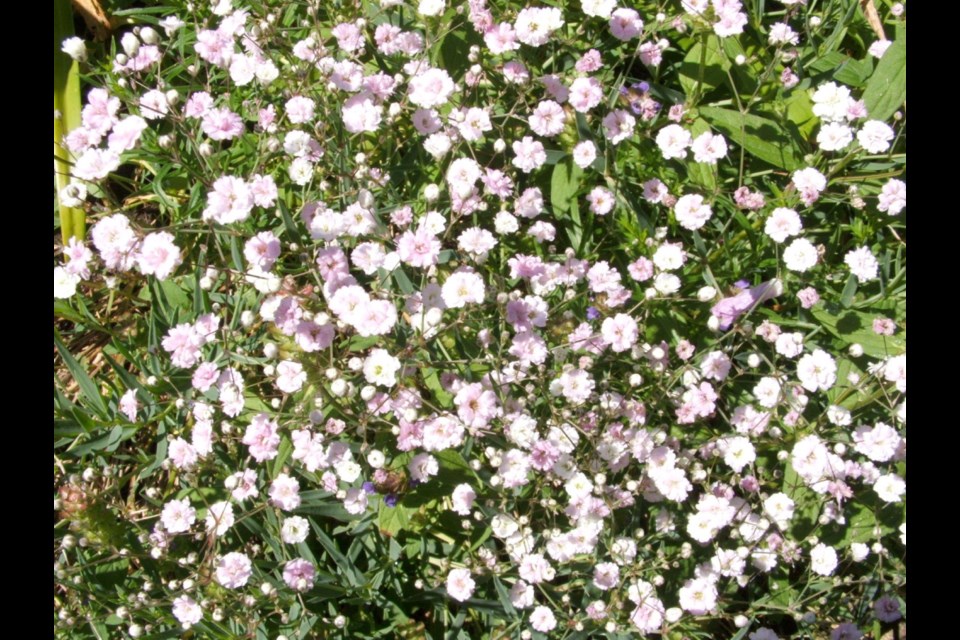Dear Helen: Can I move perennials now? I have several different types that I want to relocate, including some delphiniums.
W.D.
A little earlier in the month would probably have been better, but there should be enough decent weather left for new roots to establish before weather and soil temperatures turn really cold. Or wait until the chill of winter has passed and the soil begins warming in the spring.
Fall is not a good time to move perennials that favour sunny, very well-drained sites and dryish or only modestly moist soils. These are generally prone to root rot if newly moved plants are sending out young roots as heavy rains begin and the weather is turning cold.
Some examples of perennials that are more safely moved in the spring: rock rose (Helianthemum), baby’s breath, Gaillardia, Eryngium, pinks (Dianthus) and succulent plants such as sempervivums.
Delphiniums are highly prized, classic garden perennials that are fairly demanding. They prefer a rich, moist soil that drains well and a place in the sun as well as regular fertilizing and digging, dividing, and replanting every second or third year, in the spring. When dividing, use the youngest, outside pieces to replant. For enhanced disease prevention, replant in new locations.
Dear Helen: A few years ago, our purple smoke bush (Cotinus coggygria purpureus) died back after we pruned it. It did produce a sprout that grew back into a good-sized bush. After we pruned it more carefully a second time, the plant began dying back again. Why? Any suggestions? The plant produces some feathery, smoke-like flower plumes, but not as much as others I have seen.
K.M.
The photo you sent indicates some kind of wilting of the foliage following pruning. A soil-borne fungus called verticillium wilt does sometimes infect smoke bush plants, but if that were the cause in your case, the wilting would have occurred before the pruning, too.
Another issue is that smoke bush plants can vary in their ability to tolerate heavy pruning. Those with a strong tolerance are sometimes pruned down close to the ground early every spring in order to produce stems with extra-large leaves that will display strikingly vivid autumn colouring. These young foliage stems are often used in cut arrangements.
For smoke trees and bushes (they can be grown in both forms) in the general landscape, minimal pruning is generally recommended. Pruning, best done in March, is commonly limited to removing damaged, diseased or awkwardly positioned branches and shortening overlong, straggly stems that detract from the plant’s pleasingly rounded shape.
Where they grow in their native Asian and Southeast European habitats, Cotinus species are found mainly in places with poor, dry, rocky or gravelly soils. In garden landscapes here, they sometimes do poorly and become susceptible to disease in cushy- textured, fertile soils kept routinely well watered. Soils that are too fertile or too moist will also discourage free flowering. Where soils are strongly acidic, liming is recommended. An ideal soil pH is 6.0.
Dear Helen: What is the best time in the year to move my raspberries to a raised bed, in a site with more sun?
D.W.
You can move the canes safely in either early-to-mid fall or as early as possible in the spring. If there have been problems with the canes, consider waiting until spring and purchasing new ones as soon as they arrive in garden centres in March or early April.
Raised beds for raspberries are useful where soils are heavy in texture and drain poorly of excess moisture in winter. Wet conditions make the plants susceptible to root rot.
Because raspberries are long-term plantings, prepare the soil well with lime, a generous layer of a nourishing compost and a slow-release fertilizer.
Garden events
View Royal meeting. The View Royal Garden Club will meet this evening (Wednesday, Sept. 25) at 7:30 in Esquimalt United Church, 500 Admirals Rd. For this meeting, the entrance will be the lower door off the church parking lot on Admirals. Michael Fox will share observations on his 15 years of volunteering in the Royal B.C. Museum Native Plant Garden. The garden, with more than 400 species of native plants, is a local treasure. Michael will describe its colourful origins and the subtle changes he observes in his weekly visits. Visitors and new members are welcome.
Chrysanthemum meeting. The Victoria Chrysanthemum Society will meet on Saturday, Sept. 28, 2 p.m. at 1647 Chandler Ave. in Victoria. The afternoon will feature a parlour show.



